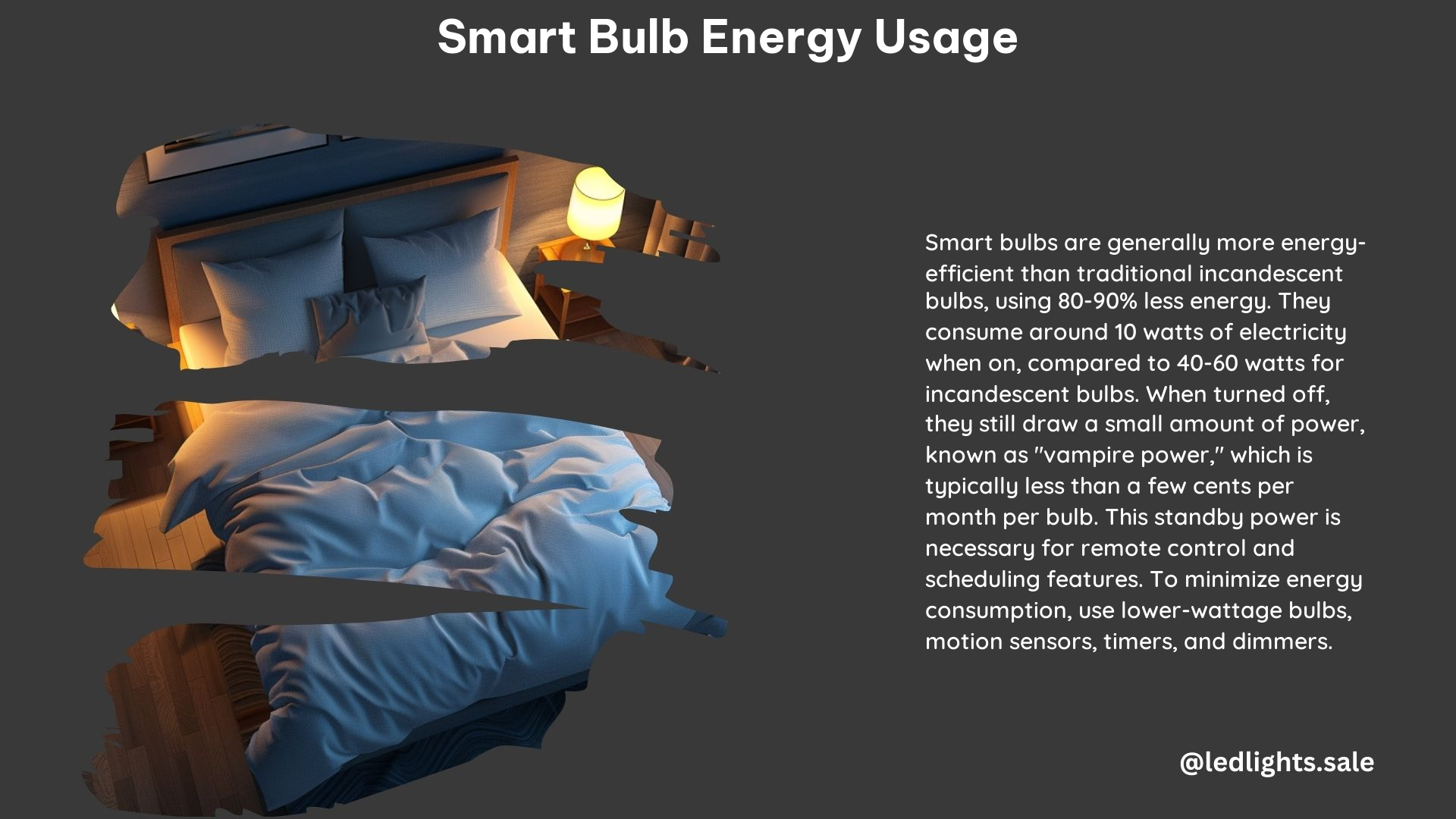Smart bulbs have become increasingly popular in recent years, offering a range of features and benefits that make them an attractive choice for homeowners and renters alike. However, one of the primary concerns surrounding smart bulbs is their energy usage, both when in use and when turned off. In this comprehensive guide, we’ll dive deep into the technical specifications of smart bulb energy usage, explore how they can help reduce energy consumption and save on electricity bills, and provide a detailed DIY guide to optimize their energy efficiency.
Technical Specification of Smart Bulb Energy Usage
Standby Power Consumption
When smart bulbs are turned off, they still consume a small amount of power, known as “standby power” or “vampire power.” This power is used to maintain the connection to the network, allowing the bulb to be controlled remotely and respond to commands. The standby power consumption of smart bulbs typically ranges from 0 to 0.3 watts, which equates to a few cents per month per bulb.
Energy Efficiency
One of the primary advantages of smart bulbs is their energy efficiency. Compared to traditional incandescent bulbs, which can consume 40-60 watts of power, smart bulbs are generally 80-90% more energy-efficient, typically consuming around 10 watts of electricity when in use. This significant reduction in power consumption can lead to substantial savings on electricity bills over time.
Power Consumption When On
When a smart bulb is turned on and in use, its power consumption can vary depending on the brightness level and the specific features being utilized. On average, smart bulbs consume around 10 watts of electricity when in use, which is significantly less than the 40-60 watts consumed by incandescent bulbs and the 15-20 watts consumed by compact fluorescent lamp (CFL) bulbs.
Can Smart Bulbs Help Reduce Energy Consumption and Save on Electricity Bills?

Yes, smart bulbs can be an effective tool in reducing energy consumption and saving on electricity bills. Here’s how they achieve this:
Remote Control
One of the key features of smart bulbs is the ability to control them remotely, either through a smartphone app or a voice assistant. This allows users to turn off the lights when they’re not needed, ensuring that energy is not wasted on unnecessary lighting.
Scheduling
Smart bulbs can be programmed to turn off at specific times, such as when everyone is asleep or when the house is empty during the day. This scheduling feature helps reduce energy consumption by ensuring that the lights are only on when they’re needed.
Motion Sensors
Many smart bulbs come equipped with motion sensors that can detect when someone enters or leaves a room. When no motion is detected, the bulbs can automatically turn off, further reducing energy consumption.
Dimming
Smart bulbs can be dimmed to reduce their power consumption. Some models even have the ability to automatically adjust the brightness based on the time of day or the amount of natural light in the room, optimizing energy usage.
DIY Tips to Optimize Smart Bulb Energy Usage
-
Use Lower-Wattage Bulbs: When selecting smart bulbs, choose models with lower wattage ratings, as they will consume less energy while still providing adequate lighting.
-
Use Motion Sensors: Install motion sensors in strategic locations throughout your home to ensure that smart bulbs turn off when no one is present.
-
Use Timers: Set timers to turn off smart bulbs at specific times, such as when everyone is asleep or when the house is empty during the day.
-
Use Dimmers: Utilize dimmer switches or the dimming capabilities of your smart bulbs to reduce their power consumption when full brightness is not required.
-
Group Bulbs: Group your smart bulbs together and control them as a single unit, rather than individually, to avoid leaving them on unnecessarily.
-
Monitor Energy Usage: Use smart home energy monitoring tools or apps to track the energy consumption of your smart bulbs and identify any areas for improvement.
-
Upgrade to the Latest Models: As technology advances, newer smart bulb models may offer even greater energy efficiency and advanced features, so consider upgrading your older bulbs.
-
Educate Household Members: Ensure that everyone in your household understands the importance of energy-efficient smart bulb usage and encourages everyone to follow the tips outlined above.
By implementing these DIY tips, you can optimize the energy usage of your smart bulbs and maximize the savings on your electricity bills.
